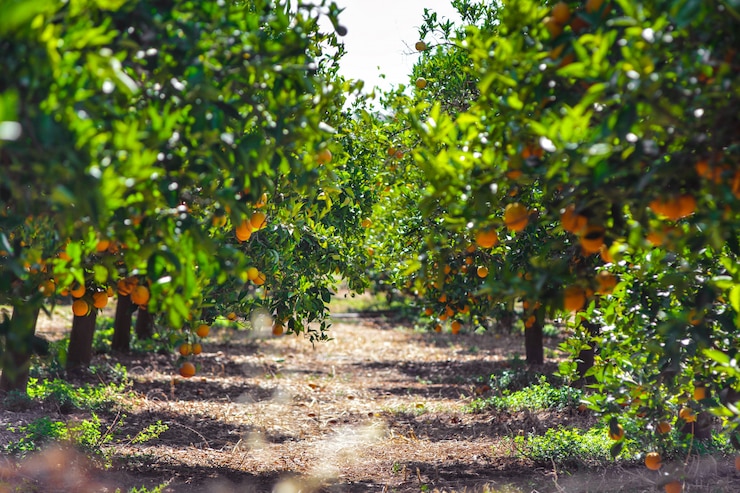Running a profitable fruit orchard in South Africa requires meticulous planning, effective management, and a deep understanding of the agricultural market. This article provides an in-depth look into various aspects such as revenue generation, cost management, risk mitigation, strategic planning, efficiency, productivity, market dynamics, financial management, growth strategies, investment, funding, and strategic planning necessary for a successful fruit orchard.
Revenue
Revenue in a fruit orchard primarily comes from the sale of fresh fruits, but there are other potential income streams as well.
- Fruit Sales: The primary source of income, including direct sales to consumers, retailers, and wholesalers.
- Value-Added Products: Producing items like jams, juices, and dried fruits can diversify income.
- Agritourism: Offering farm tours, fruit-picking experiences, and other agritourism activities.
Costs
Managing costs effectively is crucial to maintaining profitability. The costs involved in running a fruit orchard can be categorized into fixed and variable expenses.
- Fixed Costs: These include land acquisition or lease, planting trees, setting up irrigation systems, and building storage facilities.
- Variable Costs: These cover labor, fertilizers, pesticides, water, equipment maintenance, and transportation.
Cost Management Tips:
- Bulk Purchasing: Buy supplies like fertilizers and pesticides in bulk to reduce costs.
- Efficient Water Use: Implement efficient irrigation systems to minimize water costs.
- Labor Management: Use seasonal labor to handle peak periods like planting and harvest.
Risks
Fruit orchards face several risks, including adverse weather, pests, and market fluctuations. Mitigate these risks by:
- Diversification: Plant a variety of fruit trees to reduce the impact of any single crop failure.
- Insurance: Invest in crop insurance to cover potential losses due to adverse weather or other unexpected events.
- Pest Management: Implement integrated pest management (IPM) to manage pest populations effectively and sustainably.
Strategy
A well-defined strategy is essential for long-term success. Key components include:
- Market Research: Continuously monitor market trends to align production with consumer demand.
- Sustainable Practices: Adopt sustainable farming practices to ensure long-term orchard health and productivity.
- Quality Assurance: Maintain high standards of fruit quality to build a strong reputation and customer loyalty.
Efficiency
Operational efficiency can significantly reduce costs and increase productivity. Enhance efficiency by:
- Modern Equipment: Invest in modern farming equipment to improve planting, irrigation, and harvesting efficiency.
- Labor Training: Train workers in best practices to ensure high productivity and minimal waste.
- Automation: Use automation technology for tasks like irrigation, fertilization, and pest control.
Productivity
High productivity is key to a profitable orchard. Focus on:
- Soil Health: Regularly test and amend soil to ensure optimal fertility and tree health.
- Tree Management: Implement proper pruning, thinning, and fertilization practices to maximize fruit yield.
- Efficient Harvesting: Use efficient harvesting techniques to minimize fruit damage and loss.
Market
Understanding market dynamics is crucial for the profitability of your fruit orchard.
- Market Analysis: Conduct regular market analysis to understand demand, price trends, and consumer preferences.
- Branding: Develop a strong brand identity to differentiate your produce in the market.
- Export Opportunities: Explore export opportunities to access higher-paying international markets.
Financial Management
Effective financial management ensures the sustainability and growth of your orchard.
- Budgeting: Create and adhere to a detailed budget to manage expenses and revenues.
- Record Keeping: Maintain accurate records of all transactions, production data, and financial statements.
- Cost-Benefit Analysis: Regularly perform cost-benefit analyses to evaluate the profitability of various practices and investments.
Growth
To ensure long-term growth, focus on expanding operations and diversifying income streams.
- Increase Acreage: Gradually increase the size of your orchard to boost production.
- New Markets: Explore new markets for your fruits, including niche markets for organic or exotic fruits.
- Allied Ventures: Consider allied ventures like agritourism, processing, or direct-to-consumer sales.
Investment
Investment in technology, infrastructure, and human resources is essential for growth and efficiency.
- Greenhouses: Invest in greenhouses to protect sensitive fruit varieties from adverse weather.
- Cold Storage: Develop cold storage facilities to preserve fruit quality and extend shelf life.
- Training: Invest in continuous training for your workforce to improve productivity and efficiency.
Funding
Access to adequate funding is crucial for the success of your orchard.
- Government Grants: Explore government grants and subsidies available for fruit farmers.
- Bank Loans: Secure bank loans for large investments in infrastructure and equipment.
- Private Investors: Attract private investors by showcasing the orchard’s profitability and growth potential.
Strategic Planning
Strategic planning involves setting long-term goals and devising plans to achieve them.
- Vision and Mission: Define a clear vision and mission for your orchard.
- SWOT Analysis: Conduct SWOT analysis to understand strengths, weaknesses, opportunities, and threats.
- Action Plan: Develop a detailed action plan with timelines and milestones to achieve your strategic goals.
By focusing on these aspects, fruit farmers in South Africa can navigate the complexities of the farming business and achieve sustained profitability. Effective management, strategic planning, and continuous improvement are key to running a successful fruit orchard.
Join 'Farmers Mag' WhatsApp Channel
Get the latest Farming news and tips delivered straight to your WhatsApp
CLICK HERE TO JOIN






